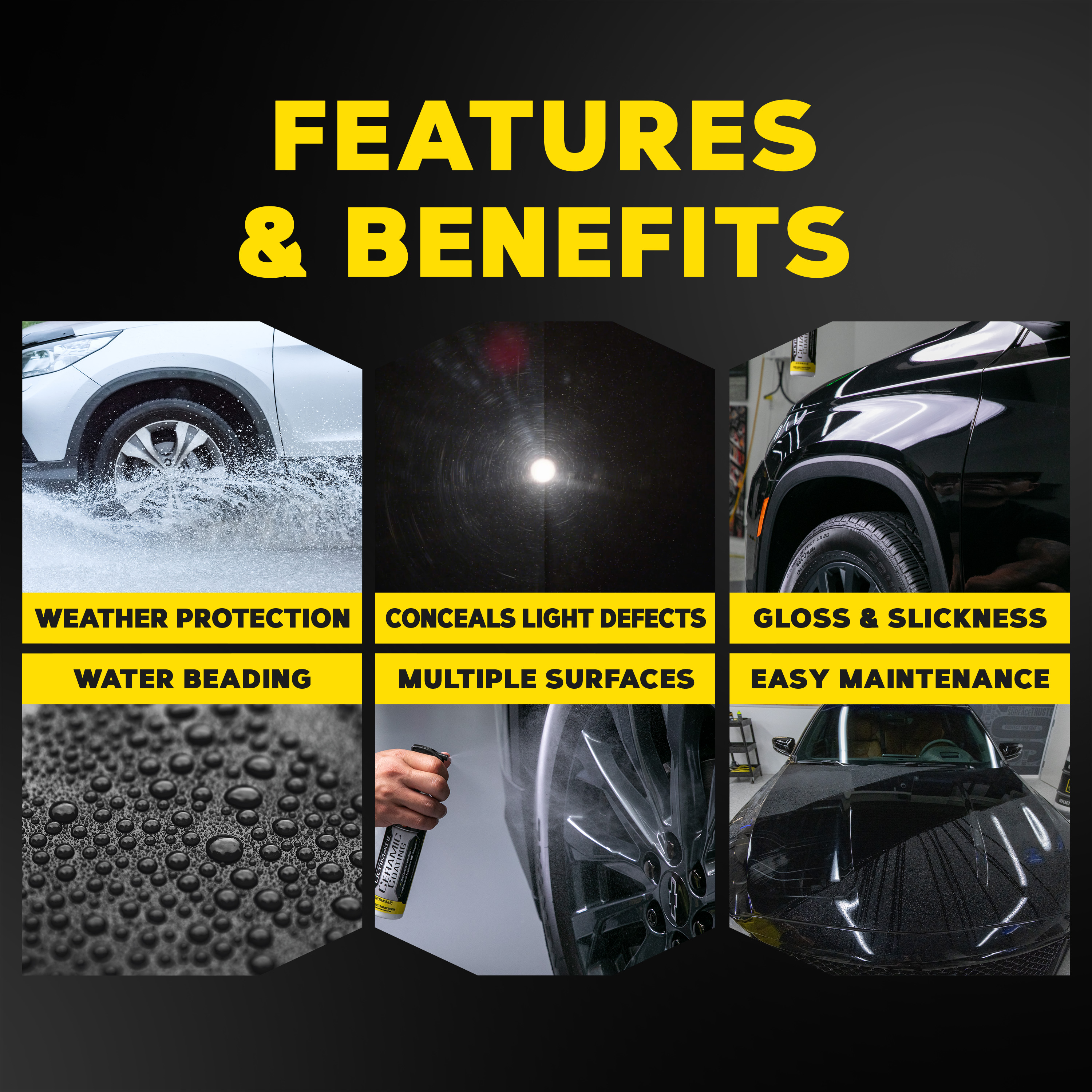Just How Ceramic Coating Philadelphia Keeps Your Lorry Looking New for Years
Just How Ceramic Coating Philadelphia Keeps Your Lorry Looking New for Years
Blog Article
Why Ceramic Finishing Is the Ultimate Option for a Flawless Finish
Ceramic coating has arised as a leading option for those seeking a flawless coating for their automobiles, many thanks to its remarkable toughness and protective attributes. What aspects really established ceramic layer apart?
What Is Ceramic Layer?

When used appropriately, ceramic coating creates a hydrophobic surface that repels water and dirt, making it less complicated to preserve and clean up. Unlike traditional waxes or sealants, which commonly offer short-term security, ceramic finishes can last for numerous years, relying on the product quality and application technique. The procedure of applying ceramic layer requires precise preparation, consisting of complete cleansing and in some cases paint modification, to guarantee optimal bonding and effectiveness.
Ceramic coverings are not restricted to vehicle surfaces; they can also be used on various materials, including glass, steel, and plastics, giving a functional option for improving protection. Overall, ceramic finishing stands for a considerable development in surface security innovation, combining both functional and visual advantages for a large range of applications.
Advantages of Ceramic Finishing
While several surface defense options exist, the advantages of ceramic layer stand apart due to its one-of-a-kind homes and long-lasting performance. Among the main advantages is its remarkable resilience. Ceramic Coating Philadelphia. Unlike traditional wax or sealers that require regular reapplication, ceramic coatings give a resistant layer that can last for a number of years, significantly lowering maintenance initiatives
One more remarkable advantage is enhanced defense versus environmental pollutants. Ceramic finishings create a hydrophobic surface that pushes back water, dust, and various contaminants, making it much easier to clean. This function not only preserves the lorry's look yet also minimizes the threat of rust and oxidation, particularly in extreme climate condition.
Furthermore, ceramic coatings use remarkable resistance to UV rays, protecting against fading and destruction of paint over time. This UV security is crucial for maintaining the visual worth of surfaces and lorries revealed to guide sunshine.
Furthermore, the shiny finish accomplished with ceramic layer improves the general aesthetic charm, offering surfaces a showroom-quality luster. On the whole, ceramic coverings stand for a significant development in surface protection technology, supplying enduring benefits that satisfy both visual and useful requirements.
Exactly How It Works
Recognizing the scientific research behind ceramic layers discloses exactly how they offer such remarkable defense and durability. At its core, a ceramic covering is a liquid polymer that chemically bonds with the lorry's factory paint. This bonding produces a protective layer that is both hydrophobic and oleophobic, repelling water, dirt, and oil. The primary component of a lot of ceramic coatings is silicon dioxide (SiO2), which is originated from quartz. This substance adds to the covering's firmness and resistance to scrapes, UV rays, and environmental contaminants.
The application process entails several steps, consisting of surface preparation, which is vital to accomplishing ideal adhesion. As soon as used, the covering undertakes a curing procedure, during which it solidifies and creates a semi-permanent bond with the paint surface area. This bond is what differentiates ceramic coverings from standard waxes and sealers, offering a longer-lasting protective obstacle that can endure for many years.
In addition, the density of the covering can enhance its safety top qualities, guaranteeing that it can withstand rough problems. Ultimately, the science of ceramic coatings integrates advanced products with innovative application strategies to provide an exceptional level of security and aesthetic enhancement for vehicles.
Comparison With Conventional Approaches
The benefits of ceramic finishings become especially apparent when compared to standard paint defense techniques such as sealers and waxes. While waxes provide a temporary luster, typically lasting a couple of weeks to a number of months, ceramic coverings offer a resilient protective layer that can endure for several years. This sturdiness dramatically lowers the frequency of reapplication, making ceramic layers an extra affordable solution gradually.
Additionally, typical methods often call for considerable prep work and several applications to achieve a satisfying degree of defense. In comparison, ceramic finishes bond at a molecular degree with the vehicle's surface, creating a robust guard against ecological contaminants like UV rays, acid rain, and roadway salts. This bond enhances the car's resistance to scrapes and swirl marks, which are prevalent with traditional waxes and sealers.
Furthermore, the hydrophobic properties of ceramic coatings repel water and dirt, causing simpler cleansing and maintenance. In comparison, wax and sealant-treated surfaces can bring in grime, demanding even more internet constant cleaning - Ceramic Coating Philadelphia. Generally, ceramic coatings not only offer exceptional security however also supply an extra enduring and aesthetically appealing coating, developing them as the preferred option for critical vehicle owners
Application and Maintenance Tips

Making use of a foam applicator, apply the finish in small areas, adhering to the maker's guidelines relating to thickness and overlap. Permit enough treating time in between coats, commonly 1 day, to guarantee proper bonding. After application, it is critical to prevent exposure to water or rough aspects for at least a week to enable the finishing to completely treat.
Additionally, utilizing a ceramic upkeep spray can boost the covering's hydrophobic homes and longevity. Regular assessments for any type of indications of wear will certainly help preserve the finish's integrity and maintain that pristine helpful site coating.
Verdict
In verdict, ceramic layer emerges as an exceptional alternative for accomplishing a perfect automotive finish. By creating a robust bond with manufacturing facility paint, ceramic covering properly guards against scratches, UV rays, and ecological contaminants.

Report this page